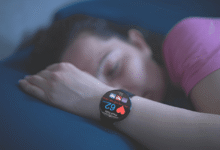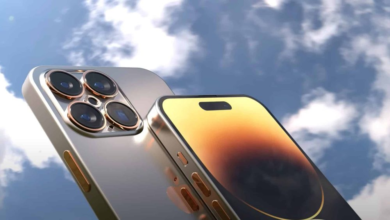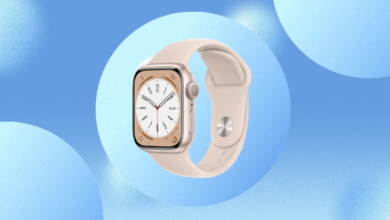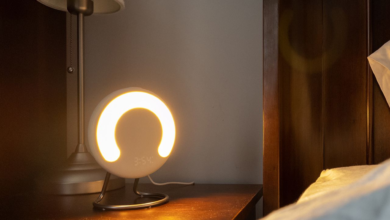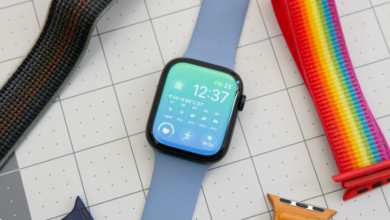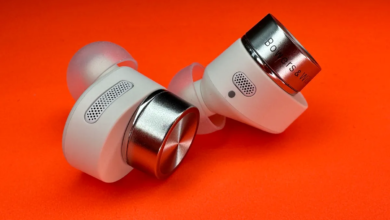5 Future-Ready Gadgets You’ll Want Before Everyone Else
Discover 5 future-ready gadgets you need From AI wearables to quantum tech, get ahead with these groundbreaking devices before everyone else.

The tech world moves fast, and staying ahead means getting your hands on future-ready gadgets before they hit the mainstream. These cutting-edge devices aren’t just upgrades they’re game-changers, designed to transform how we work, communicate, and live. From AI-powered wearables to mind-blowing computing breakthroughs, the gadgets on this list will give you an edge in efficiency, convenience, and innovation. If you love being first to experience the next big thing, these are the must-have technologies to watch.
What makes these future-ready gadgets so special? They don’t just follow trends they set them. Whether it’s augmented reality glasses that overlay digital info onto the real world or biometric rings that predict health issues before symptoms appear, these devices push boundaries. Investing in them now means you’ll be ahead of the curve, adapting to the future before everyone else catches on. Ready to explore the tech that will redefine tomorrow?
5 Future-Ready Gadgets You’ll Want Before Everyone Else
AI-Powered Smart Glasses with Augmented Reality
Augmented Reality (AR) glasses are no longer a sci-fi fantasy they’re becoming an essential tool for both work and leisure. Companies like Meta, Apple, and Ray-Ban have already introduced smart glasses that overlay digital information onto the real world. These future-ready gadgets can display navigation prompts, translate languages in real-time, and even provide hands-free access to notifications and calls. What sets the next generation of AR glasses apart is their integration with artificial intelligence. Imagine walking down the street and instantly receiving information about landmarks, restaurant reviews suggestions all without lifting your phone.
Next-Gen Foldable Smartphones with Self-Healing Screens
Foldable smartphones have already made waves, but the next iteration will take durability and functionality to new heights. Samsung, Huawei, and Motorola are leading the charge with devices that feature self-healing screens, reducing the risk of scratches and minor damages over time. These future-ready gadgets combine the portability of a phone with the expansive screen real estate of a tablet, making them ideal for multitaskers. For professionals and creatives, a foldable phone means carrying a single device that adapts to different needs whether drafting emails on the go or sketching designs on a larger canvas.
Neural Interface Headbands for Brain-Computer Interaction
Brain-computer interfaces (BCIs) are no longer confined to medical labs consumer-grade neural headbands are making mind-controlled technology a reality. Companies like Neuralink and NextMind are developing wearable devices that allow users to control gadgets, type messages, or even play games using only their thoughts. These future-ready gadgets leverage EEG sensors to interpret brain signals, opening doors for enhanced accessibility and futuristic gaming experiences. Beyond entertainment, BCIs hold immense potential for mental wellness. Some headbands offer real-time meditation feedback by monitoring brainwave patterns.
Portable Quantum Computing Devices for On-The-Go Processing
Quantum computing is no longer restricted to massive research labs compact, portable versions are emerging for consumer use. Companies like IBM and Google are working on quantum processors that can fit into briefcase-sized devices, offering unparalleled computational power for complex problem-solving. These future-ready gadgets will revolutionize fields like cryptography, financial modeling, and drug discovery by performing calculations in seconds that would take traditional computers years.
Biometric Health Rings for Advanced Wellness Tracking
Wearable health tech is evolving beyond smartwatches biometric health rings are the next big thing. Devices like the Oura Ring and Movano’s Evie Ring track metrics like heart rate variability, blood oxygen levels, and even early signs of illness with clinical-grade accuracy. These future-ready gadgets provide 24/7 health insights without the bulk of a traditional fitness tracker. As health monitoring becomes more personalized and discreet, biometric rings will replace bulky wearables, making them essential for anyone serious about wellness.
The Challenge of Future-Ready Gadgets
High Cost of Early Adoption
One of the biggest barriers to owning future-ready gadgets is their premium price tag. Since these technologies are often in their experimental or limited-release phases, manufacturers price them high to recoup R&D costs. For example, the first generation of foldable smartphones and AR glasses carried price points that put them out of reach for average consumers. Early adopters must weigh whether being first is worth the steep investment before prices eventually drop.
Limited Availability & Supply Constraints
Many future-ready gadgets face production bottlenecks, making them difficult to acquire. Whether due to specialized components, manufacturing complexities, or high demand from tech enthusiasts, devices like neural interfaces and portable quantum computers often have long waitlists. This exclusivity can frustrate buyers who want immediate access to the latest innovations.
Unproven Long-Term Reliability
Being an early adopter means testing technology that hasn’t yet stood the test of time. Issues like battery degradation in foldable phones or software bugs in AI-powered wearables are common in first-gen products. Users risk investing in gadgets that may become obsolete quickly or require costly upgrades as companies refine their designs.
Compatibility & Ecosystem Gaps
Many future-ready gadgets operate in niche ecosystems, lacking seamless integration with existing devices. For instance, a cutting-edge health ring might not sync with your preferred fitness apps, or a next-gen AR headset may have limited third-party software support. Early buyers often face a patchwork of workarounds until broader adoption catches up.
Rapid Obsolescence in a Fast-Moving Market
Tech evolves at lightning speed, and today’s revolutionary gadget could be overshadowed by a superior version within months. Early adopters must accept that their future-ready gadgets may quickly lose their “cutting-edge” status as competitors introduce refinements, leaving them stuck with outdated tech sooner than expected.
Privacy & Ethical Concerns
Breakthroughs like neural interfaces and AI-driven wearables raise valid questions about data security. How is your brainwave data stored? Who can access your biometric health metrics? Early adopters often become de facto test subjects for unresolved privacy policies, requiring extra caution before trusting sensitive data to unproven systems.
The Learning Curve of Advanced Tech
Not all future-ready gadgets are user-friendly out of the box. Devices like quantum computing kits or AR development tools demand technical expertise, alienating casual users. Without clear tutorials or customer support, early buyers may struggle to unlock their gadget’s full potential.
Read More: Kitchen Tech That Saves Time and Boosts Flavor
Conclusion
The future of technology is unfolding before our eyes, and these future-ready gadgets offer an exciting glimpse into what’s next. By embracing these innovations today, you’re not just keeping up with trends—you’re positioning yourself at the forefront of a smarter, more connected world. From AI-enhanced wearables to revolutionary computing power, each device on this list has the potential to transform how we live, work, and play in the coming years.
As these future-ready gadgets evolve from cutting-edge concepts to everyday essentials, early adopters will enjoy a distinct advantage. Whether it’s boosting productivity, enhancing health monitoring, or unlocking new forms of digital interaction, these technologies promise to redefine our relationship with tech. The question isn’t if you’ll need them it’s how soon you’ll make them part of your life. Don’t wait for the future to arrive; start shaping it today with these game-changing devices.
FAQs
What makes a gadget “future-ready”?
Future-ready gadgets incorporate advanced technologies like AI, AR, or quantum computing, ensuring they remain relevant and functional as tech evolves.
Are neural interfaces safe for everyday use?
Current consumer-grade neural headbands are non-invasive and safe, using EEG sensors to read brainwaves without surgery.
How long until foldable phones replace traditional smartphones?
Within the next 5-7 years, foldables are expected to dominate as screen durability and affordability improve.
Can quantum computers be used at home?
While still expensive, portable quantum devices are emerging for developers, researchers, and tech enthusiasts.
Do biometric health rings require a smartphone connection?
Most sync with smartphones for detailed analytics but can store basic health data independently.

